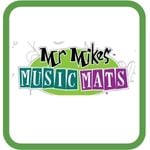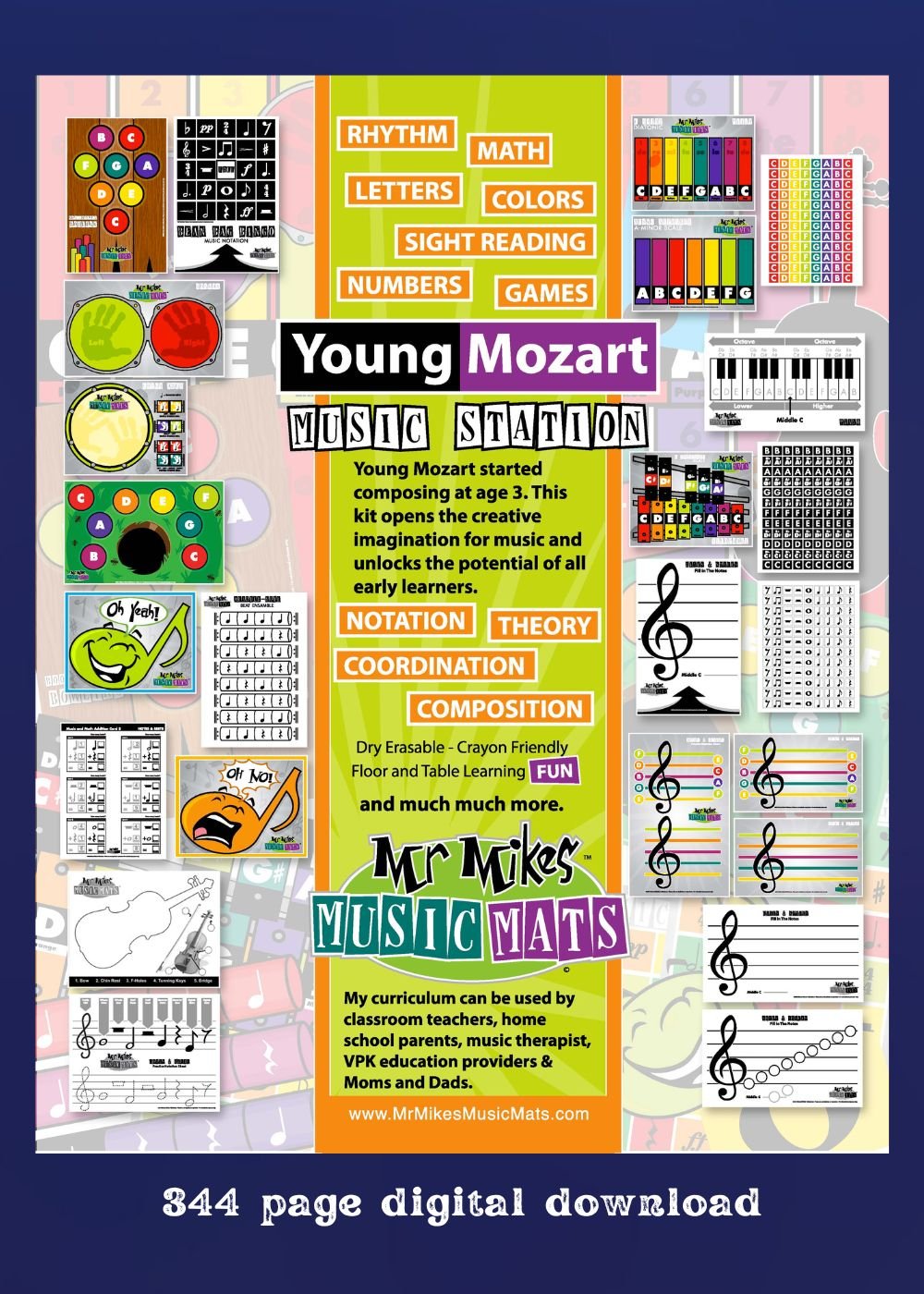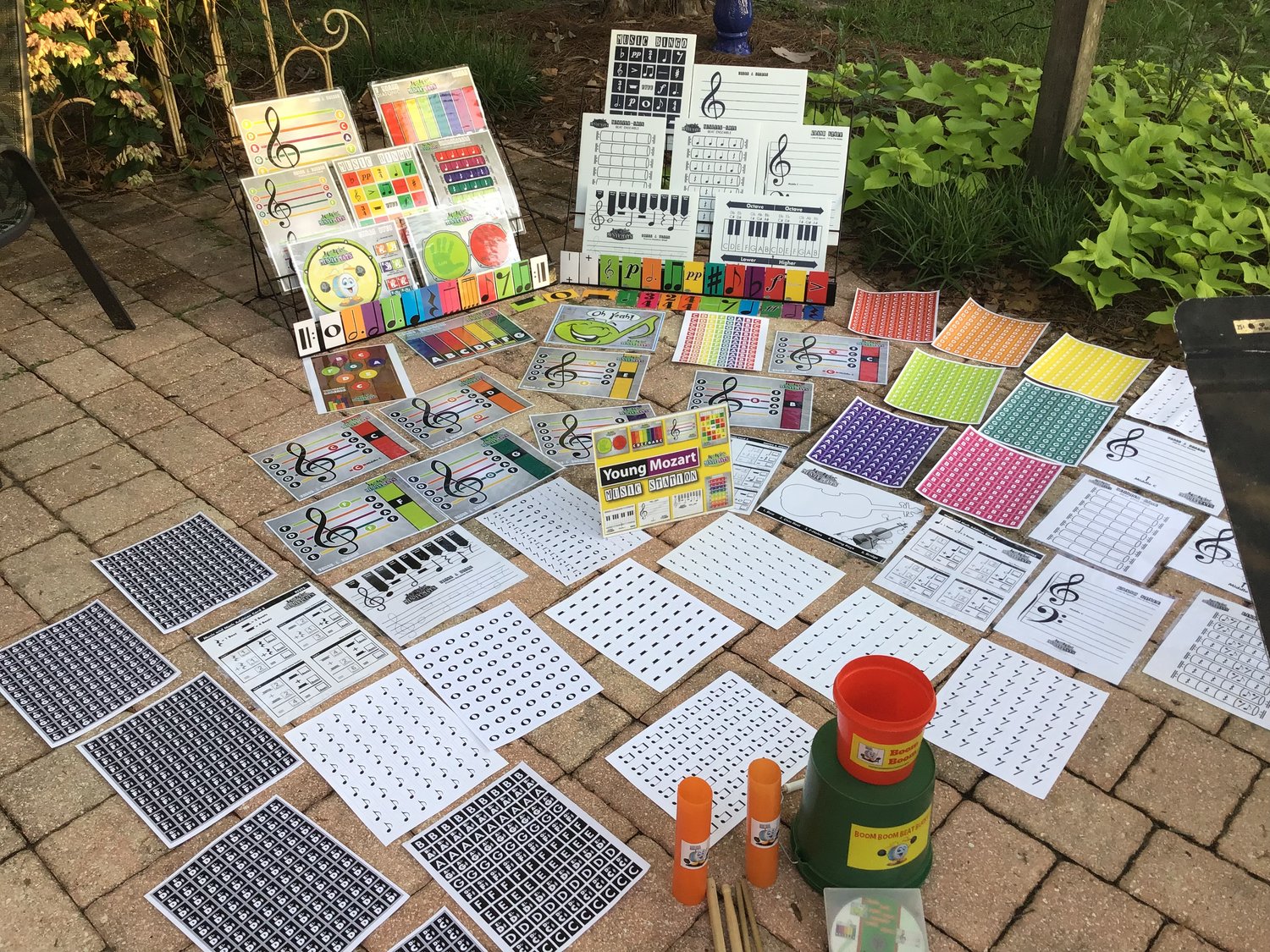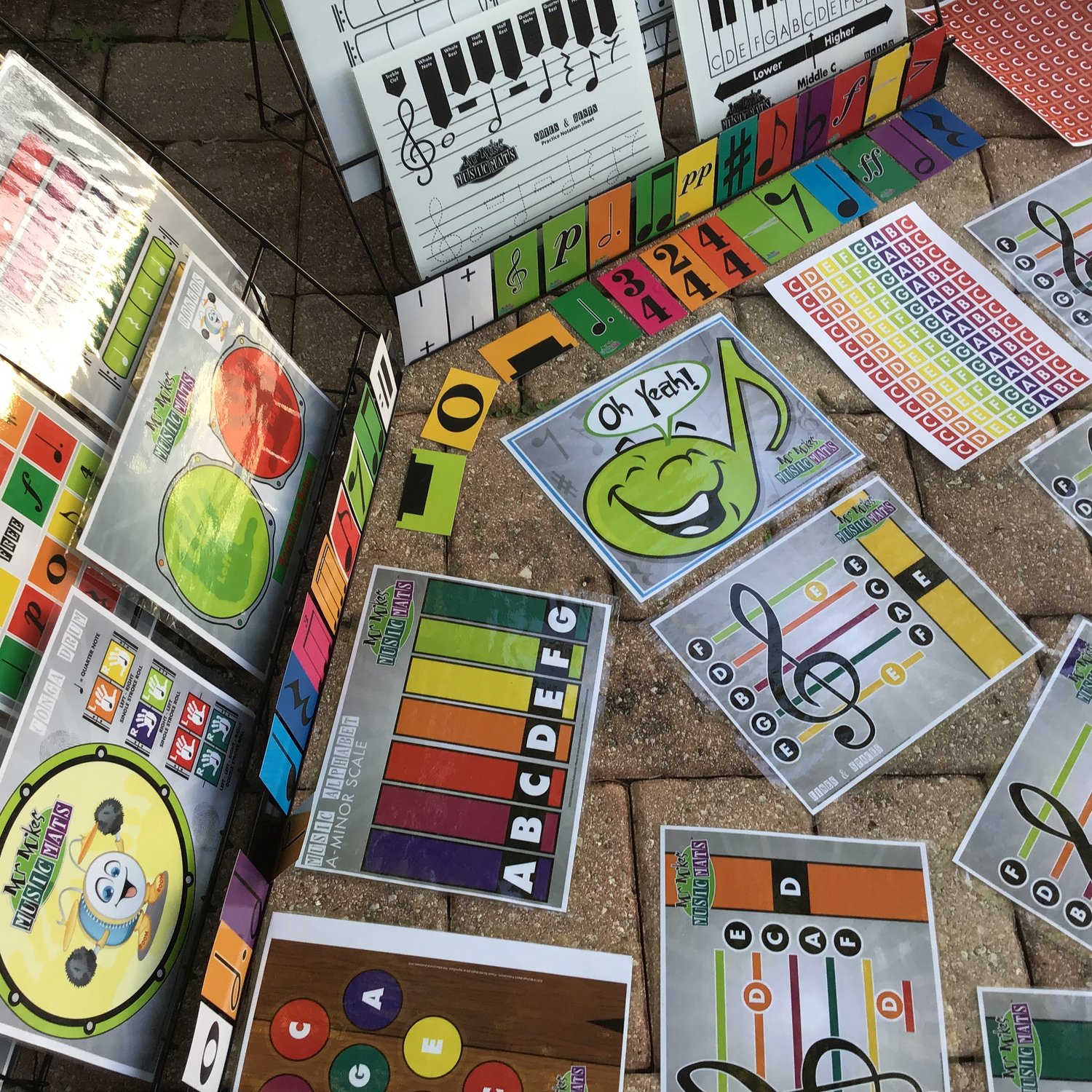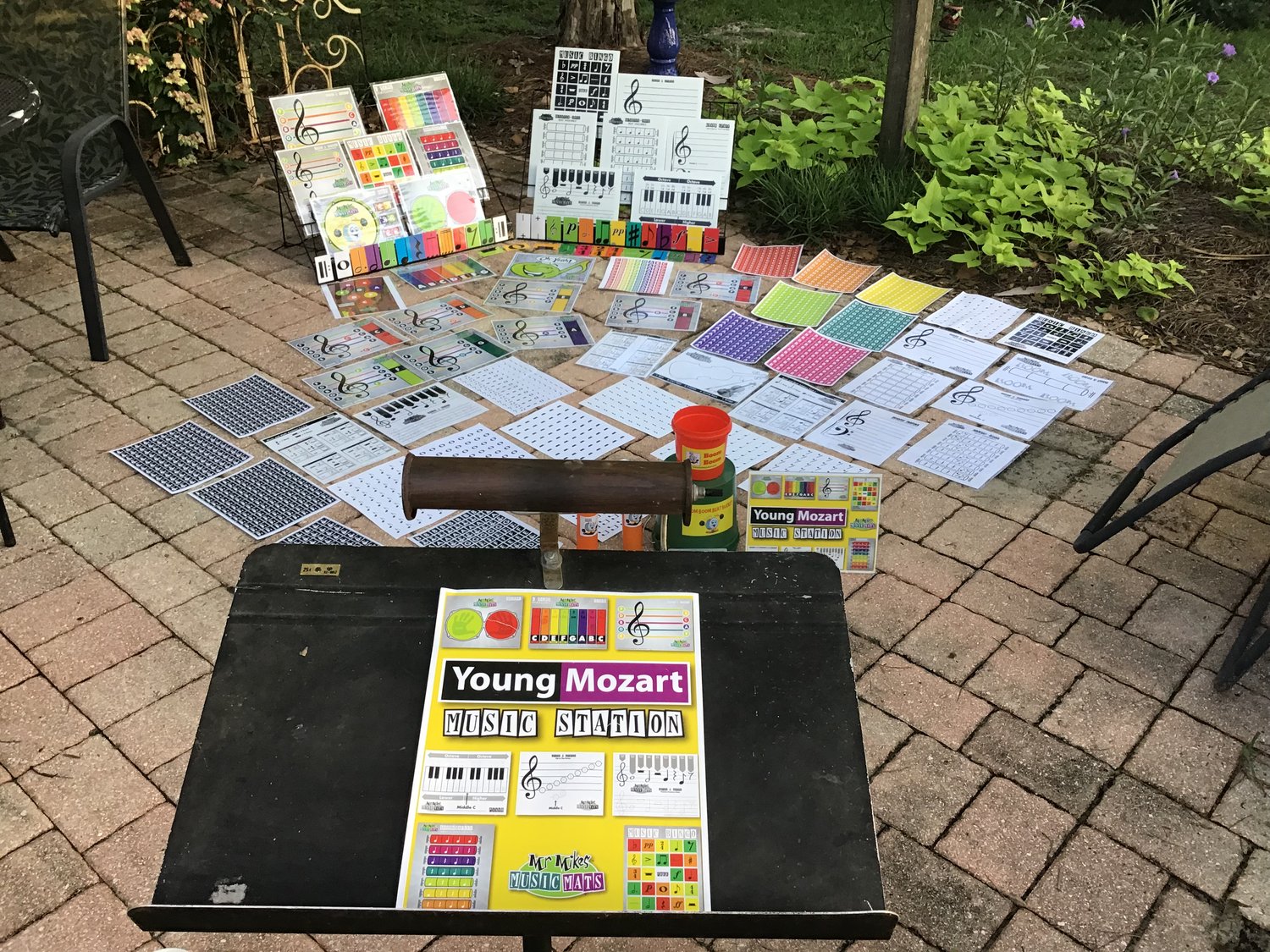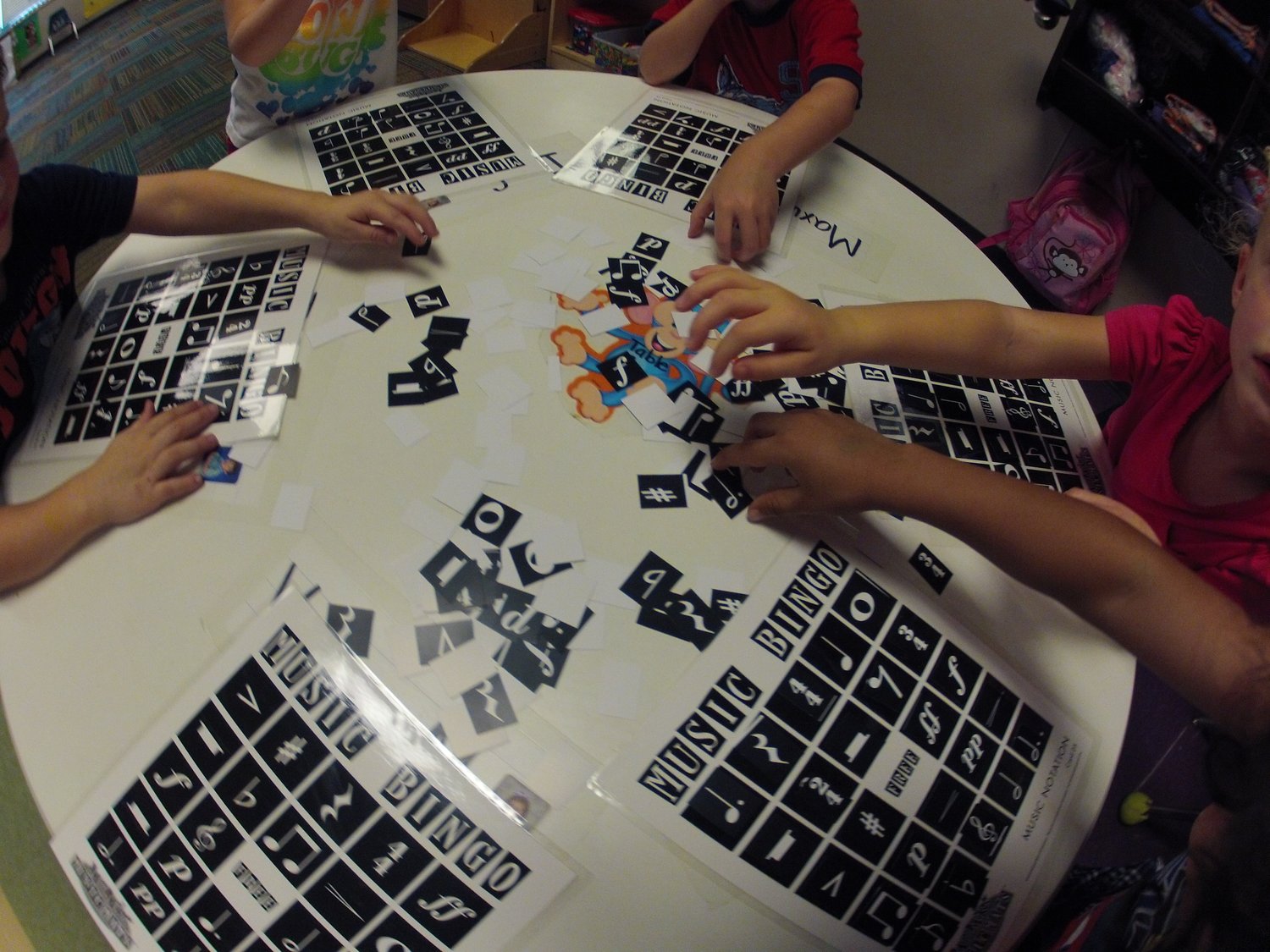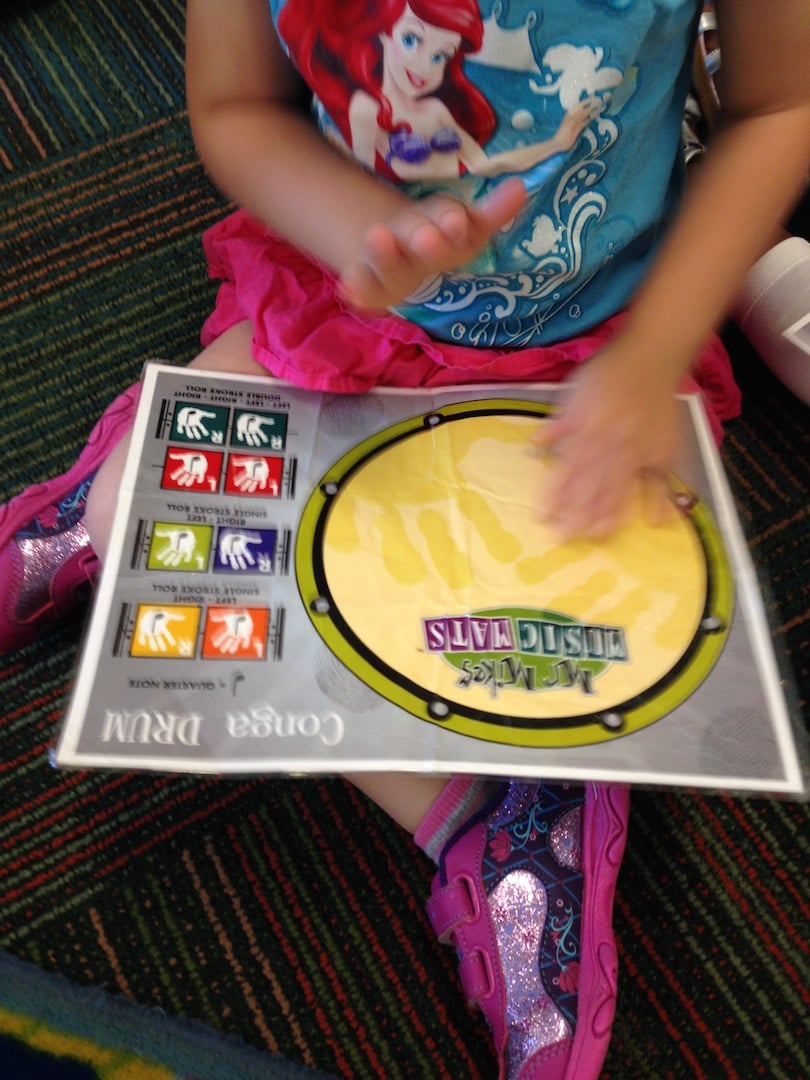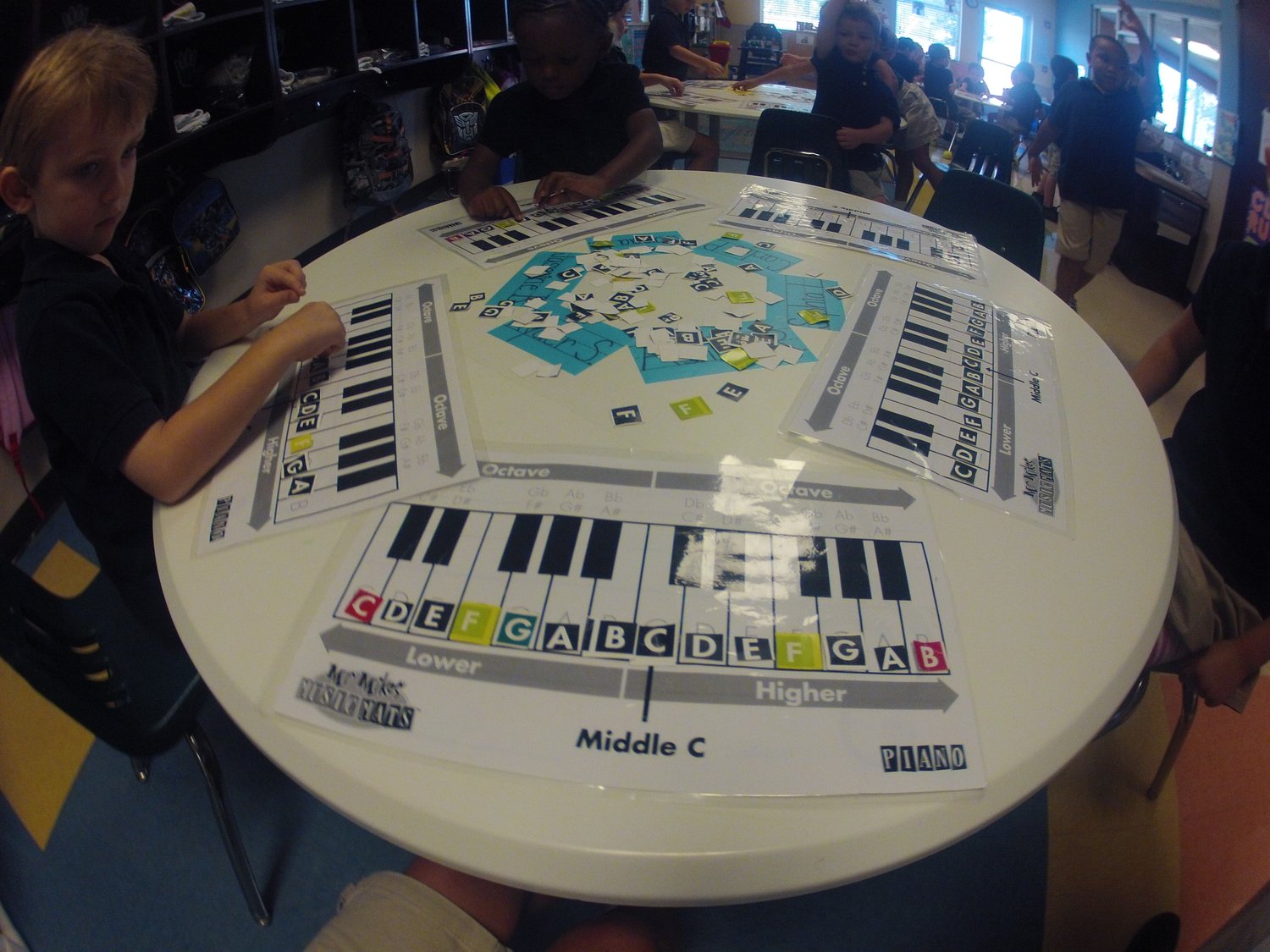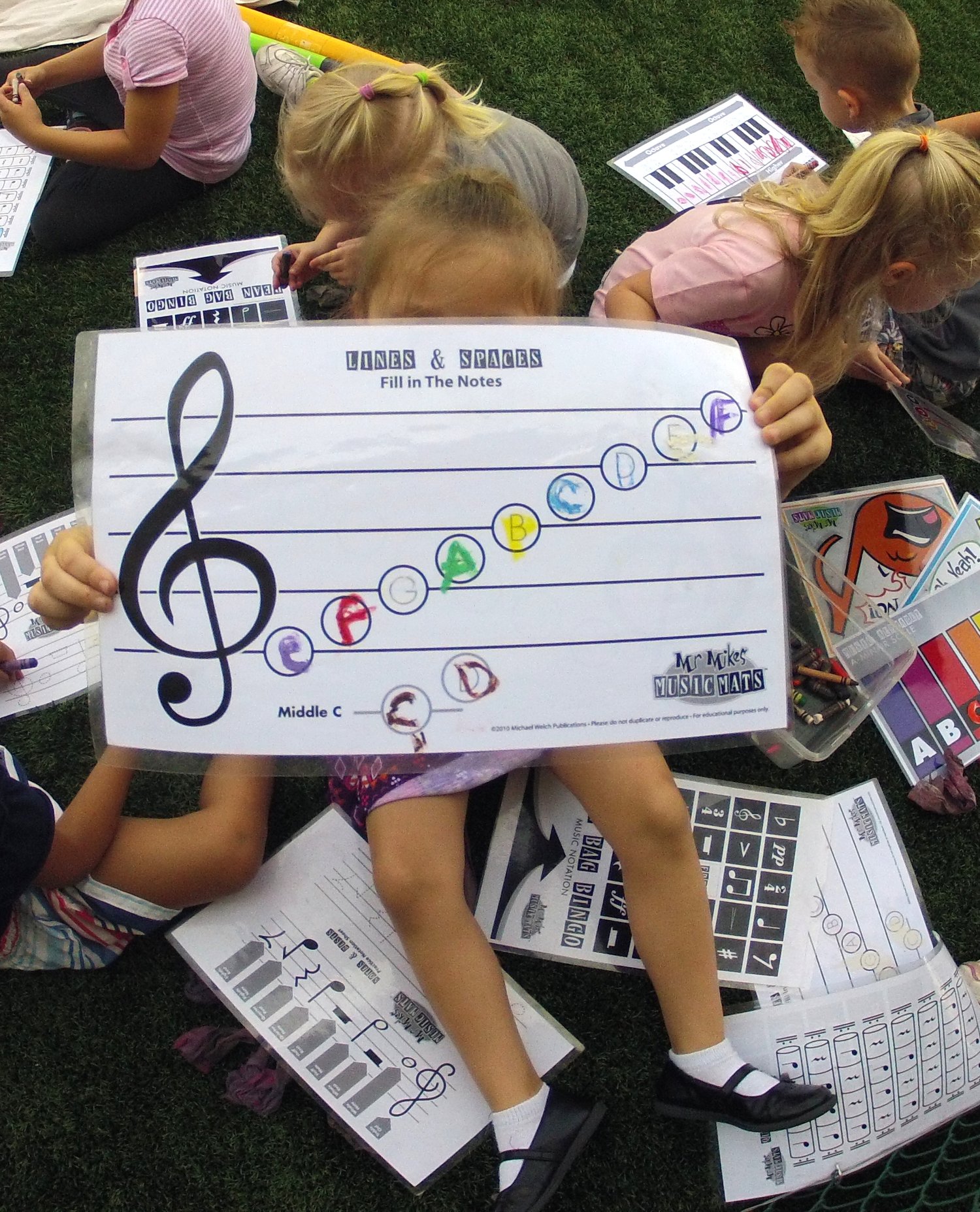Young Mozart Music Station (344 page digital download) (Watch The Video Tutorial)
(Your digital download will include 344 single pdf pages as a 70 mb zip file)
Please watch the video for complete info on the 344 page download. (Click here to read everything about the complete MrMikesMusicMats / Young Mozart Music Station complete curriculum.
This is a lengthy post of info. You can download this complete info post at the (FREE INTRODUCTION TO SINGLE DIGITAL DOWNLOAD)
Young Mozart Music Station
Young Mozart was composing at the age of (3) three. Young Mozart Music Station provides the tools to unlock the creative music compositional mind. Kids love to have fun. Not every child will become a professional musician. But-they can learn to appreciate the forms and structure of music notation and composition.
They enjoy the Young Mozart method of learning music theory with a hands-on tactile / kinesthetic concept. Music is “Rhythm-Melody-Harmony” and more. Kids love movement games and rhythmic drumming. They love having fun, playing music, making rhythms and Boom Boom Beats.
Young Mozart Music Station teaches:
Numbers / Letters / Rhythm / Games / Theory / Coordination / Sight Reading / Composition / Colors / Math / Notation
Young Mozart Music Station will teach children:
(1) Hand Coordination-Movement
(2) C Diatonic Scale
(3) Chromatic Scale
(4) Notes of the piano-Sharps & Flats
(5) Lines & Spaces of the Treble Clef
(6) Quarter/Eighth Note Rhythms
(7) 24 Notation Signs
(8) Music & Math
(9) Sight Reading
(10) Colors-Letters-Numbers----AND MUCH MORE
Young Mozart Music Station
Is a complete music curriculum developed for early learners. The conceptual system will teach early learners theory, music & math, composition, rhythm, notation, sight- reading and -----development skills. Students will utilize their creative and cognitive gifts.
The Young Mozart Music system comes with the tools needed to learn about the creative process of music.
Michael Welch has authored this program for Education Providers, Music Specialist, Home School Moms, Dads and Grandparents.
MrMikesMusicMats (10) paperback books include:
1. Young Mozart
2. Lines and Spaces
3. 24 Note Tile Sheets
4. 24 Music Notation Flashcards (b&w)
5. 24 Music Notation Flashcards (color)
6. Music Notation Bingo
7. Music and Math
8. Quarter Note Beat Ensemble
9. Eighth Note Beat Ensemble
10. Boomwhacker Ensemble
(BONGO MAT)
The Bongo Mat is one of my favorites, for many reasons. First, kids love it. The Bongo Mat was one of my first MrMikesMusicMats. As a laminated mat, I use it for ages: one-two through age four.
There are many creative “Hands-On” activities with the MrMikesMusicMats Bongo.
Kids love to play on it with recorded music or simple sing-along songs. As an educational tool, the MrMikesMusicMat Bongo teaches early learners their left and right. The left is colored lime green. Lime starts with the alphabet letter L. Lime Green = Boomwhacker F. The right is colored Red.
The Red Boomwhacker is C.
(Simplicity) Teaching and coaching the early learners to put their hand on the Lime Green / Left and Red / Right, reinforces their knowledge of left and right. The MrMikesMusic Bongo Mat is a creative motor skill activity.
(CONGA MAT)
The Boom Boom Conga Mat projects a left and right silhouette. Kids love to tap and play the laminated Boom Boom Bongo and Congo Mat. Like the Bongo Mat, kids love to play along with recorded music or Boom Boom sing-alongs.
I’ve included a couple drum rudiments on the Congo Mat. These rudiments teach early learners left and right. It also improves motor skills.
The (2) rudiments are the Single and Double Stroke Roll. Quarter notes are the beat. The (3) examples are built inside repeat signs, which you can teach as music theory.
The top example is a single stroke roll, which starts with the left hand, followed by the right.
The center/middle is a single stroke roll starting with the right. The little hands in the boxes show the thumbs and fingers of the left and right hand.
I also use a metronome to reinforce listening and playing at different tempos.
· The (3rd) example is called the double stroke roll. I teach this with the name MAMA DADDY ROLL. This is an old-school 60s drumming title for the double stroke roll.
· This example is played starting with LEFT-LEFT followed by RIGHT-RIGHT. The repeat signs are very useful to teach with the double stroke roll. The hand images with the quarter notes reinforce the child’s knowledge of the beat.
· I also use the bongo and conga mats with a metronome. This teaches listening skills at different tempos, BPM’s. The simplicity of the laminated Bongo and Conga mat is amazing.
(Color Coded System)
My color-coded system is used throughout my curriculum.
It’s based on the current colors of Boomwhackers and various similar bell and melodic instruments. MrMikes system teaches the Boomwhacker colors with lines and spaces of the Treble Clef.
My system also has quarter and eighth note ensembles with Boomwhackers, playing different quarter / eighth note beats.
Utilizing MrMikes method for sight-reading and rhythmic learning will advance your students skills at a higher level, and much quicker. You’ll be amazed at students sight-reading skills as they learn lines and spaces from the reinforced MrMike’s color system.
MrMikesMusicMats has 30+ color-coded mats in the curriculum that teach the theory of rhythm and melody. Including a minor scale, C diatonic scale, quarter note rhythms, chromatic scale, lines and spaces of the treble clef.
(A Minor Scale)
The A Minor mat teaches the notes of the musical alphabet. Historically, the C major diatonic scale is the first melodic experience a child/early learner hears. C-D-E-F-G-A-B-C or DO-RE-ME-FA-SO-LA-TE-DO.
Going against the norm,
I discovered that teaching the (7) notes beginning with (A) (CAN BE Exception to the rule) more in sync with the student/early learner classroom experience, when learning the (26) letters of the alphabet.
I’ll teach the (5) Sharps and Flats, in conjunction with the (7) A-B-C-D-E-F-G letters. I also explain that the notes can be arranged in different order or sequence, as are letters in written and spoken words. They understand this theory without complication of the C-D-E-F-G-A-B-C / ABCDEFG etc. Alphabet concept.
This concept of teaching the first letter of the musical alphabet A, opposed to C, has been a positive teaching experience.
I’m sure there are objections to stay with the old school concept, without trying this theory. I teach the C-D-E-F-G-A-B-C diatonic scale in conjunction with Alphabet (A) theory. I also teach the theory of the octave. Note number 8.
However you decide to teach, the A Minor Mat will be an excellent tool for students. As noted, in my color-coded system, the A-B-C-D-E-F-G, are Boomwhacker colors. Matching the MrMikes Notes Tiles is a tactile, hand-on learning activity that speeds up the students learning process. And, It’s Fun.
(Notes of the Musical Alphabet)
(Refresh) Historically, the C major diatonic scale is the first melodic theory/scale a child/early learner is taught. C-D-E-F-G-A-B-C or Do-Re-Me-Fa-So-La-Te-Do. I discovered that teaching the (7) notes beginning with A is (can be) much more in sync with the early learning classroom learning of the (26) letters of the alphabet. I teach them that these (7) are the musical alphabet. I later add the (5) sharps and flats to this lesson plan. I explain that the notes can be arranged in different order or sequence, as are letters for words.
The simple concept of teaching, beginning with the letter A, opposed to the C scale has been a positive teaching experience. When teaching the C-D-E-F-G-A-B-C scale, I teach the theory of the octave C. As noted in my color-coded system, the A-B-C-D-E-F-G, are Boomwhacker colors.
MrMikesMusicMats, Note Tiles is a hands on-tactile activity that speeds up the students learning process. And It’s Fun.
(C Major Diatonic Mat)
The C Major Diatonic Mat is a priority tool for teaching music theory. All of MrMikes melodic mats, including the A-Minor, Xylophone, C Major and Black & White Piano Mat are templates for teaching basic music theory.
The C-Major Mat teaches 4+ aspects of the music alphabet. The colors are Boomwhacker tube colors. The mat includes the numbers 1-2-3-4-5-6-7-8. They read the words of the colors, Red-Orange-Yellow-Lime Green-Green-Purple Magenta and the octave Red C. The mat includes the singing C major scale Do-Re-Me-Fa-So-La Te-Do.
Matching the color MrMikes Note Tiles is a hands-on tactile activity and speeds up the learning process.
(C Chromatic Scale Xylophone)
MrMikes C Chromatic scale xylophone is based on the MrMikes color system.
The C-to-C octave notes are the Boomwhacker colors. I recommend using MrMikes Note Tiles for hands-on tactile activities as the students learn the chromatic scale. MrMikes has several diatonic, chromatic, sharp and flat note tile sheets. There are rhythm notes and rest also. These note tiles should be cut out and placed on each corresponding note. The color note tiles make recognition easier as the students match the tile to the note on the mat.
A similar black and white piano mat, plus (optional) 18x24 and 24x36 inch mats are MrMikes resources in the curriculum.
(A-B-C-D-E-F-G) Note Tile Sheets)
The music alphabet letter sheets are tools for students and educators. The note tile sheets can be visual tools that teach each letter of the music alphabet. There are (7) color note tile lesson sheets plus (5) sharp/flat note tile sheets. The majority of MrMikesMusicMats can be utilized as activities.
MrMikesMusicMats can be activities on tables, floor, inside or outside.
(Color Diatonic Note Tile Sheet)
This MrMikesMusicMat has the (7) + 1 octave C of the music alphabet. Color-coded with MrMikes complete curriculum. There are 20+ note tile sheets in MrMikes complete curriculum for your classroom, online or homeschool use.
(Boom Boom Putt-Putt & Bowling)
Boom Boom Putt-Putt and Bowling are fun educational mats. Music note games that teach the notes of the music alphabet. Various creative applications can be utilized with these mats. Bean Bags, Bingo Chips, Boomwhackers and more. These mats are available as (optional) letter and 11x17 size.
(Red C Note Tile Sheet)
MrMikesMusicMats, Lines & Spaces teach the music alphabet, sight-reading and notation with colors.
Each mat has a visual Boomwhacker graphic that emphasizes the note and it’s color. The Lines & Spaces, 8-part lesson begins with the Red Middle C, placed on the ledger line below the staff, followed by the (3rd) space C. Black and White-reinforcing note circles are placed on the (5) lines and spaces.
(Orange D)
The Orange D Lines & Spaces teaches the correct position of the D above the ledger line. It also teaches the line (4) position.
(Yellow E)
The Yellow E teaches 2 treble clef positions. Line (1) E and space number (4) E.
(Lime Green F)
The Lime Green F mat teaches the (2) positions of the F on the treble clef. Space number one and line number (5).
(Green G)
MrMikesMusicMats, Green G teaches the position of the Green G on the treble clef. Line numbers two.
(Purple A)
MrMikesMusicMats, Purple A teaches the space number (2) position on the treble clef.
(Magenta B)
The Magenta B is on line (3) of the treble clef. Kids love the word magenta.
(Red C)
The 3rd space C on the treble clef. Teaching the theory of the (8) note octave can also be continued in your lessons.
(Lines & Spaces) #1
(Mats 1-6 are included in Lines & Spaces book two) MrMikesMusicMats has several color and black & white treble clef examples that teach lines & Spaces. MrMikesMusicMats has Color-Coded circles that match the lines. The color circles for each space are also Boomwhacker note colors. Utilizing Boomwhackers as a teaching tool reinforces the student’s visual experience.
(Lines & Spaces) #2
The secondary MrMikesMusicMat is the color treble without the color circles. It includes the color-coded (5) lines. Note tiles are recommended with all color MrMikesMusicMats. Several of MrMikesMusicMats are available as legal size options.
(Lines & Spaces Practice Notation) #3
The MrMikesMusicMats Practice Notation mat is a useful tool for activities using MrMikesMusicMats Note Tiles. The top treble clef is a visual guide for the students to place their note tiles on.
The black treble clef is underneath. (MrMikesMusicMats can also be used with erasable crayons/markers)
(Lines & Spaces) #4
MrMikesMusicMats offers several black and white treble clef options. I always recommend the note tiles in conjunction with the mats. This hands-on tactile activity reinforces the students learning experience. MrMikesMusicMats Lines & Spaces Fill In The Notes is a black and white treble clef.
The visual circles with the music alphabet letter teaches the student each note, beginning with the ledger line middle C, below the staff. Note Tiles and bingo chips can be used. A fun floor or table learning activity.
(Lines & Spaces) #5
This MrMikesMusicMat is blank, without letters in the circles. As students learn from the color MrMikesMusicMats, they will be able to transition to the black and white treble clef, used in traditional music notation.
(Lines & Spaces) #6
This MrMikesMusicMat is a traditional treble clef that includes a ledger line middle C.
(Boomwhacker Ensemble) Quarter Note
MrMikesMusicMats offers several lesson activities that teach quarter note and eighth note rhythms.
This (9) part MrMikesMusicMat teaches quarter note rhythms, plus the sound of the C diatonic scale. The mats can also be utilized and taught in any melodic or sequence you desire.
This (9) part lesson activity also includes a conductor’s score.
I also recommend using the MrMikesMusicMats note tiles, which include various melodic music alphabet letters and rhythmic notation. The first mat introduces the student to the quarter note playing beat one and two. Quarter Rest is exercised on beats three and four. This rhythmic and melodic activity also has many possibilities for performance activities.
I begin teaching this rhythm activity to 4 year-old students. Each mat has enclosed repeat signs that you can teach to the students. The repeat signs allow you the liberty to perform the ensemble as 2-4-6-8 measures or more.
(Boomwhacker – Low C)
The Boomwhacker Ensemble Red C plays a quarter note on beats one and two. Quarter rest on beats three and four.
(Boomwhacker D)
The orange D plays quarter notes rest on beats one and two followed by quarter notes on beats three and four.
(Boomwhacker E)
The yellow Boomwhacker E plays a quarter note on beat one; quarter rest on beats two, three and four.
(Boomwhacker F)
The Lime Green Boomwhacker plays a quarter note on beat one, quarter rest beat two, quarter rest beat three and quarter note on beat four.
(Boomwhacker G)
The Green Boomwhacker G has a quarter rest on beat one. Quarter notes on beats two and three. Quarter rest on beat four.
(Boomwhacker A)
The purple Boomwhacker A plays a quarter note on beat one, quarter rest beat two, quarter note beat three and quarter rest beat four.
(Boomwhacker B)
The Magenta B plays quarter notes on beats one, two and three. Quarter rest on beat four.
(Boomwhacker C)
The second Boomwhacker Red C plays consecutive quarter notes on beat one, two, three and four.
(Quarter Note Beat & Eighth Note Beat Ensemble)
These Beat Ensembles are black and white rhythmic versions of the color Boomwhacker Ensemble. A (9) part lesson activity that includes a conductor’s score with (8) player parts.
(Optional 18x24 and 24x36 mats are available)
Book Number One – “Young Mozart”
There are a total of (10) Ten (lesson/mats) pages in Young Mozart. My “Book Cover” has graphic images of each lesson / graphics / mats pages.
Pages are Color and Black and White.
C=color) (B&W=Black and White)
Page 1 (c) = Bongo Drum
Page 2 (c) = Conga Drum
Page 3 (c) = C Major Diatonic Scale
Page 4 (b&w) = Piano Mat
Page 5 (c) = C Chromatic Scale
Page 6 (b&w) Traceable Violin
Page 7 (b&w) Traceable Notation Practice Sheet
Page 8 (c) A Major Scale
Page 9 (c) Boomwhacker Putt Putt
Page 10 (c) Boomwhacker Bowling
Book Number Two “Lines and Spaces”
“Lines and Spaces” is based on my creative use of colors. I created my Treble Clef Notation mats and pages so they matched the colors of the Boomwhackers.
Teaching with this theory as a daily method, the student will quickly learn the lines and spaces of the treble clef. As they grow in their sight-reading skills, they will transition to the standard “Black And White” concept of written composition.
I utilize the visual colors of each Boomwhacker. I start with the Red Middle C and continue through the “Lines and Spaces” of the Treble Clef.
Each Visual Treble Clef contains the matching Boomwacker Image with its corresponding color and pitch.
The pages of my book “Lines and Spaces” include:
Treble Clef Red C
Treble Clef Orange D
Treble Clef Yellow E
Treble Clef Lime Green F
Treble Clef Green G
Treble Clef Purple A
Treble Clef Magenta B
Treble Clef Octave Red C
(1) Lines and Spaces Treble Clef with Matching Colors
(2) Treble Clef with Color Lines
(3) Lines and Spaces “Fill In The Notes” with Note Letters
(4) Lines and Spaces “Fill In The Notes” w/o Note Letters
(5) Blank Treble Clef with Middle C
(6) Double Treble Clef Practice Notation Sheet w/color notes
All (14) Fourteen Pages are visible on the Book Cover
Book Number (3) Three: “24 Note Tile Sheets”
“24 Note Tile Sheets” will be used with multiple MrMikesMusicMats books, lessons and activities. Please look at the books cover and you will see thumbnail images of all 24 pages.
Tips =The color and black and white chromatic and diatonic note tiles can be matched with the color C diatonic mat, xylophone mat, piano mat, Boomwhacker bowling, Boomwhacker putt-putt and the A Minor Mat.
Table or floor activities: early learners find and place the tiles on the Lines and Spaces of the Treble Clef.
The rhythm notation note tiles can match the notes on Music and Math.
Notes can be placed on the blank “Make A Beat” mats. Students learn to create their own beats and rhythms.
Quarter notes and rest can be used with the “Quarter Note Beat Ensemble” and Treble Clefs.
The color Notation Bingo Note Tiles can be cut from the sheet and used with the Black and White Music Notation Bingo mat.
These are the Note Tile Sheets and Notation Signs in the book:
1. Color diatonic note sheet
2. Red C
3. Orange D
4. Yellow E
5. Lime Green F
6. Green G
7. Purple A
8. Magenta B
9. Black and White Chromatic Sheet
10. C# Db
11. D# Eb
12. F# Gb
13. G# Ab
14. A# Bb
15. Multiple Notation Sheet
16. Whole Notes
17. Half Rests
18. Half Notes
19. Quarter Rests
20. Quarter Notes
21. Eighth Notes
22. Eighth Rest
23. 2 Eighth Notes
24. 24 Color Bingo Notations (in bingo book)
“Helping Others Teach The Language Of Music”
Book (4) four: “24 Music Notation Flashcards” (black and white)
The (24) notation signs utilized in my curriculum are used in different lessons and activities. I created (2) different 24 notation books. I did this because of convenience and printing cost. Your home or classroom duplication is cheaper with Black and White. Both books (Color and Black and White) have duplicate backs with definitions of each notation sign.
The 24 notation signs in my curriculum are:
1. Treble Clef
2. 2/4 Time Signature
3. ¾ Time Signature
4. 4/4 Time Signature
5. Diminuendo
6. Crescendo
7. Pianissimo
8. Piano
9. Forte
10. Fortissimo
11. Whole Note
12. Whole Rest
13. Half Note
14. Half Rest
15. Dotted Half Note
16. Quarter Note
17. Quarter Rest
18. Dotted Quarter Note
19. Eighth Note
20. Eighth Rest
21. 2 Eighth Notes
22. Flat Sign
23. Sharp Sign
24. Accent Sign
Classroom teachers, home school parents, music therapist, and VPK education providers, Moms, Dads, Grandparents and Music Specialist can use my Curriculum.
Book (5) five: “24 Music Notation Flashcards” (color)
The (24) notation signs I’ve utilized in my curriculum are used in different lessons and activities. I created (2) different 24 notation books. I did this because of convenience and printing cost. Your classroom duplication is cheaper with Black and White. Both books (Color and Black and White) have duplicate backs with definitions of each notation sign. The front pages of each notation sign, in this book are printed in beautiful color.
The 24 notation signs in my book are:
1. Treble Clef
2. 2/4 Time Signature
3. ¾ Time Signature
4. 4/4 Time Signature
5. Diminuendo
6. Crescendo
7. Pianissimo
8. Piano
9. Forte
10. Fortissimo
11. Whole Note
12. Whole Rest
13. Half Note
14. Half Rest
15. Dotted Half Note
16. Quarter Note
17. Quarter Rest
18. Dotted Quarter Note
19. Eighth Note
20. Eighth Rest
21. 2 Eighth Notes
22. Flat Sign
23. Sharp Sign
24. Accent Sign
Book number (6) six: “Music Notation Bingo”
There are quite a few music bingo games sold in the music education arena. My book is a unique classroom activity. It’s fun and teaches students several things, besides the 24 music notation signs. It is a recognition and memory game. It can also be played with students on teams. (18x24 and 24x36 mats are optional)
The (24) bingo notation signs are the same (24) utilized with my Flash Cards.
Reinforcement of learning by seeing and recognition.
My “Music Notation Bingo” book includes (25) Black and White player cards and (5) Color caller cards. Every Black and White player card is different. Each student or player will have a different card layout.
With groups of 15+ I option to use bingo chips. You can also copy the color caller cards, cut the (24) notation tiles and use those tiles as chips.
“Music Notation Bingo” can be an activity played at tables or on the floor.
“Helping Others Teach The Gift Of Music”
Book number (7) “Music and Math”
My music and math book teaches early learners age 4/5 and up, the rhythmic value of music notes. My book only uses addition. In my classes, I begin by teaching the students these values.
Whole note and whole rest = 4 beats
Dotted half note = 3 beats
Half note and half rest = 2 beats
Quarter note and quarter rest = 1 beat
2 eighth notes = 1 beat
I use my rhythm notation flashcards on a regular basis. After they have a basic understanding of these signs, I play music and math games with them.
Example:
(1) With two hands, I’ll hold up 2 fingers on my left hand.
(This is a half note, it gets 2 beats)
(2) On my right hand, I’ll hold up 1 finger.
(This is a quarter note. It gets 1 beat)
(3) The left hand is 2 beats.
(4) The right hand is 1 beat.
(5) Two beats plus one beat, equals how many beats? 3 beats
There are (4) activity pages and (54) numerical addition examples, with answers in the “Music and Math” book.
Book number (8) “Quarter Note Beat Ensemble”
This book teaches quarter note rhythms. The ensemble is composed and based on (8) eight easy quarter note rhythms. The book includes a conductor score, (8) eight player parts plus 2 cut out pages. They include a blank “Make A Beat” sheet and a blank conductor (8) part sheet. Students love to learn this as a group.
You can create various table, chair and floor activities. It’s also a great outside activity.
As an ensemble, this can be a graduation performance piece. I use Boomwhackers and rhythm instruments. Just clapping or saying “Boom-Boom- Rest-Rest” works for each of the (8) rhythms. My “Eighth Note Beat Ensemble” is similar utilizing eighth notes and rest.
Book number (9) “Eighth Note Beat Ensemble”
“Eighth Note Beat Ensemble” includes a conductor score plus (8) eight player parts. The book includes (2) blank “Make A Beat” and “Eight part Conductor” sheets.
Students love to have fun when learning. These rhythmic activities can be very creative, musical and productive.
Book number (10) “Boomwhacker Ensemble”
I created “Boomwhacker Ensemble” for early learners, ages 4/5 and up. It’s a fun learning, performance and motion activity.
In this book, there are different performance variations of the quarter note beat ensemble composition.
For this book, I produced the “Quarter Note Beat Ensemble” in color to match the pitches of the Boomwhackers.
Red/C
Orange/D
Yellow/E
Lime Green/F
Green/G
Purple/A
Magenta/B
Red/C
There are (8) player parts plus (1) conductor score, in color.
“Quarter Note Beat Ensemble” teaches the quarter note rhythms. “Boomwhacker Ensemble” adds the pitches.
“Boomwhacker Ensemble” includes (4) variations. Each variation has printed parts for the conductor and (8) player groups or sections.
(1) Boomwhacker Ensemble for eight players: contains (9) pages. Color conductor score and (8) individual player parts.
Single measure parts with repeat signs=
Red/C = (boom-boom-rest-rest)
Orange/D = (rest-rest-boom-boom)
Yellow/E = (boom-rest-rest-rest)
Lime Green/F = (boom-rest-rest-boom)
Green/G = (rest-boom-boom-rest)
Purple/A = (boom-rest-boom-rest)
Magenta/B = (boom-boom-boom-rest)
Red/C = (boom-boom-boom-boom)
(2) Boomwhacker Ensemble 1: contains (10) pages. Conductor score and (8) individual player parts. This arrangement is (8 measures) with a repeat sign. Each player sheet is notated with the color that matches the Boomwhacker pitch. The conductor scores are also “color” matched.
(3) Boomwhacker Ensemble 2: contains (12) pages. Conductor score and (8) individual player parts. This arrangement is (16 measures) with a repeat sign.
Color Matching Parts
(4) Boomwhacker Ensemble 3: contains (16) pages. Conductor score and (8) individual player parts. This arrangement is (32) measures with a repeat sign.
Greetings: I’m Michael Welch
I became a professional musician in 1967, playing the drumset. My music career has taken me into many different aspects of music as a professional musician, author, educator and producer-entrepreneur.
In 2007, I began my journey as a music specialist. My gig was at a private day care school. I taught music 5 days a week. My students were age 3 years through 2nd grade. After 3 years of teaching, I started offering my classes for infants and toddlers.
My curriculum has been well tested and proven.
Young Mozart Music Station, MrMikesMusicMats, Boom Boom the Bass Drum, complete deluxe curriculum includes over 600 pieces.
I began the creation of my “Early Learner” music curriculum in 2008. I’ve taught thousands of early learners, infants & toddlers ages 2 up through PreK and VPK. I was in the trenches. Five days a week, for Thirteen years.
I retired from my classroom position in 2019.
Those 13 years of experience gave me much insight and knowledge into the field of early learner education, training and education provider management.
(Number 1) My curriculum was created to “Help Others Teach The Gift Of Music,” (at every daycare/early learner education provider in the United States.
This is my curriculums target market. Thousands of Home School/Parents/Child Care/Education providers---millions of early learners.
A curriculum like “MrMikesMusicMats” doesn’t exist. My curriculum is the only “complete music curriculum” in the world for “Early Learners” that provides music education to this age group.
My curriculum is a BRAND.
(Number 2) Unfortunately, Education Providers don’t employ “music specialist” because of extra cost. They may have a little “music station” in a corner with a couple percussion instruments, that’s about it.
(Number 3) Early Learners / Kids / Students love music, they love my curriculum in their classroom.
(Number 4) During my 13 years, 5 days a week of teaching, I’ve seen the struggles of teachers/educators in their classroom. I know how different fields of curriculum are taught during a child’s day. My curriculum is a welcome relief for classroom teachers.
(THIS IS VERY IMPORTANT)
My curriculum contains a very high amount of Kinesthetic and Tactile Material.
The teacher/parent/education provider can use my materials with their student’s, as they require, at the time they need it. They can delegate it to a special student or groups of students.
My materials can be useful with classroom management.
I’ve been in the trenches of early learner classrooms.
(Number 5) My materials can be used on tables, floors, inside, outside and more. One student or several in a “Music Station” can use my materials.
(Number 6) My (optional) 18x24 and 24x36 inch mats are designed for multiple students. {4 - 6 on each mat}
(Number 7) I’ve created various media sources to provide teacher training with lessons for students. My technology curriculum is Smart board, iPad, and computer/projector/media friendly. (Quicktime-mp3-mp4-Powerpoint-Keynote)
(Number 8) My curriculum benefits “early learners” at their most important learning stage.
My curriculum includes life skills: Reading-Math-Spelling-Writing and more.
Lessons and activities are a Kinesthetic, Tactile concept.
God Bless,
Michael Welch











